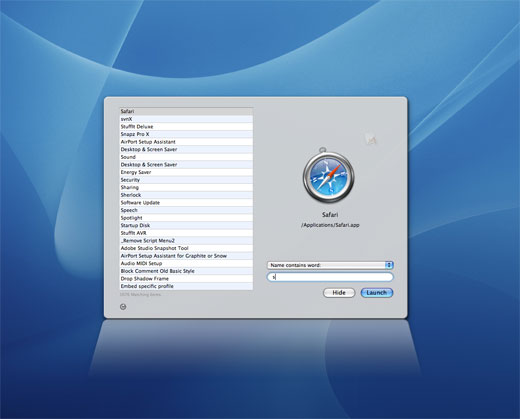2005 was a year of transition for the A Better Finder series of tools. Most of the year was spent migrating the 60,000+ lines of code of A Better Finder Rename 6 to the brave new world of Objective-C and Cocoa.
I took the opportunity to add many long-requested features, such a detachable preview window, multiple rename steps, etc.. One of the most important changes was to introduce drag & drop installation. The kind people at MindVision have provided me with their InstallerVise installer maker for ten years, but the product was beginning to show its age and its Mac OS 9 legacy.
Enter the 2005 drag & drop style installer. Today all you need to do to install A Better Finder Rename 7 is to take its icon from the disk volume and drop it where you want it. Double-click to start and you're finished. For multi-user installations, simply place the program in the Applications folder and let every user decide which optional features they want to install. This new drag & drop installation is now making its way across the entire product line:
already work on the same principle.
This leaves A Better Finder Select and A Better Finder Creators & Types. Once upon a time, both of these products covered a niche left open by the Mac OS 9 Finder. Today both of them have somewhat lost their raison d'être.
"A Better Finder Creators & Types" allows die-hard Mac OS 9 fans to continue using creator and type codes to associate documents to applications, but this approach, while still supported under Mac OS X, is no longer the recommended way of doing things and does not work with newer applications.
A Better Finder Select allows you to filter out certain files before passing them to other A Better Finder products or it allows you to select them in the Finder; it's functionality is partially covered in the Finder and is at its most useful as a front-end to the other products in the A Better Finder Series.
Is it still really useful to keep them as separate applications? I don't think so. That's why in 2006:
- A Better Finder Creator & Types' features will be integrated into the new A Better Finder Attributes 4
- A Better Finder Select's filtering features will be integrated into the preview window of both Attributes 4 and Rename 7
- A Better Finder Select's ability to pre-select files in the Finder will be integrated into Attributes 4
If you disagree with these arrangements, please post a comment or contact me via email. It is not too late yet 🙂
The advantages I see for you, the user, is that you will have less application clutter, less installation, a smaller download and last but not least will be able to filter out files in the preview window.
Obviously, with the end-of-line of Select and Creators & Types, I'll be offering free cross-grades to the owners of these "late" products.
